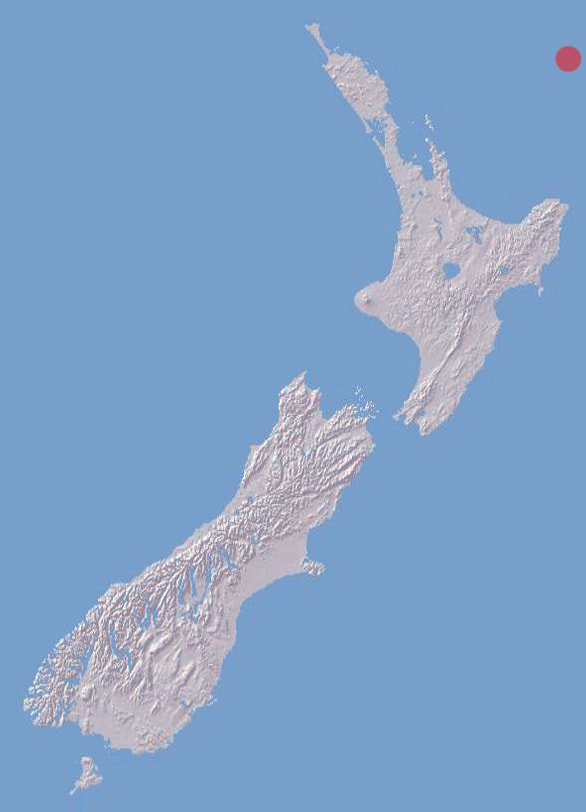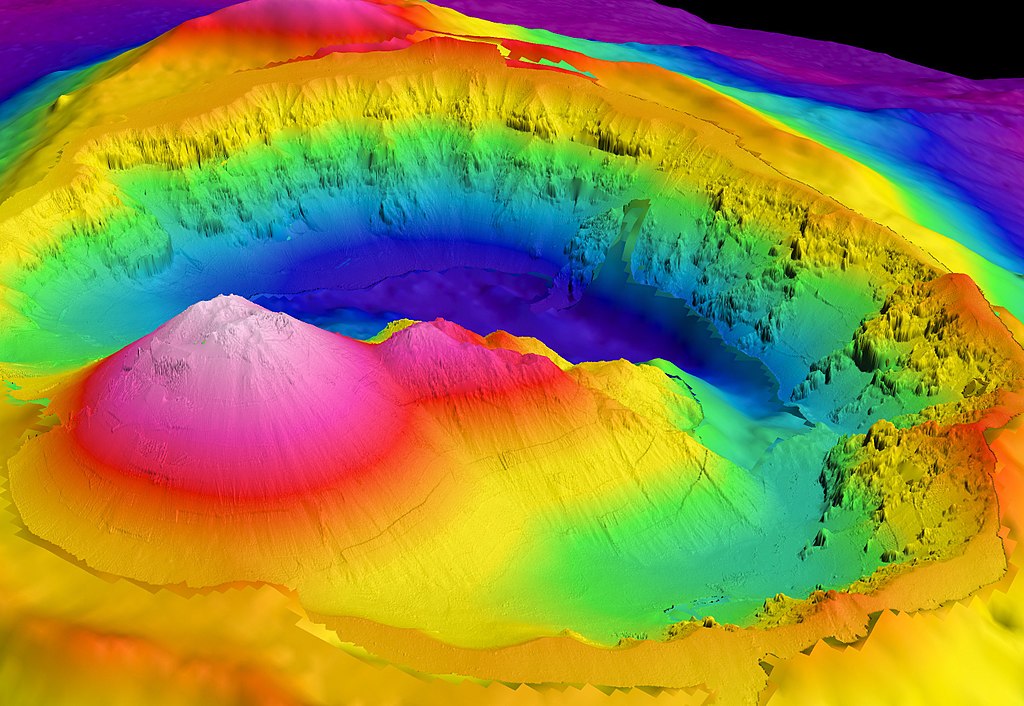Eerste leven op aarde
|
Onlangs kwam TV1 (Nieuw-Zeeland) met een reportage over de expeditie van de de National Science Foundation naar de onderzeese vulkanen in Kermadische Boog, op zo'n 350 kilometer ten noordoosten van het Noordereiland van Nieuw-Zeeland. Op beelden van de hydrothermale bronnen op de krater van de Brothers vulkaan is te zien dat vissen en kreeftachtige dieren in de buurt van deze heetwaterbronnen leven. De watertemperatuur bedraagt daar meer dan 300° C. Wetenschappers geven aan, dat de eerste vormen van organisch leven ooit onder dergelijke omstandigheden zijn ontstaan.
|
De caldera van de Brothers Vulkaan, gezien vanuit het zuiden. Wanneer de vulkaan voor het laatst tot uitbarsting kwam is nog niet duidelijk, maar sindsdien is er wel hydrothermale activiteit waargenomen, niet alleen tijdens het onderzoek in 2007, maar ook recentelijk door onderzoek van de National Science Foundation (NSF). Bron: New Zealand American Submarine Ring of Fire 2007 Exploration, NOAA Vents Program/Institute of Geological & Nuclear Sciences en NOAA-OE.
Bronnen en Media
|
|
|

